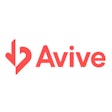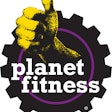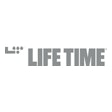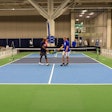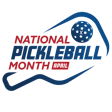Source: National Physical Activity Plan Alliance
New U.S. National Physical Activity Plan Focuses on Achievements, Two New Sectors and Need for Momentum
Washington, DC (April 20, 2016) – The new U.S. National Physical Activity Plan (NPAP) was unveiled today at the National Press Club, building upon the initial plan that the NPAP Alliance released in 2010 as a roadmap for actions supporting and encouraging physical activity among all Americans.
In presenting the 2016 plan, Russell Pate, Ph.D., chairman of the nonprofit NPAP Alliance, said that “because of this public-private initiative, we are multiple steps closer to our initial vision: one day, all Americans will be physically active, and they will live, work and play in environments that encourage and support regular physical activity.”
Jim Whitehead, CEO of the American College of Sports Medicine (ACSM), concurred with Pate by saying “The National Physical Activity Plan has led to and stimulated considerable and historic progress" and citing recent advances, including:
- 2012 -- The Lancet medical journal – Publishes special Issue on Physical Activity
- 2013 -- HHS Physical Activity Guidelines Mid-Course Report on Strategies to Increase Physical Activity in Youth
- 2015 – U.S. Surgeon General -- Issues Call to Action on Walking and Walkable Communities
- 2015 -- Elementary and Secondary Education Act -- Establishes Physical Education as a central component of a student’s well-rounded education
- 2015 -- Fixing America’s Surface Transportation (FAST) Act -- Requires all National Highway System roadways be designed for safe access to all modes of transportation
- 2015 -- NIH Common Fund – Provides markedly increased funding for research on Molecular Transducers of Physical Activity in Humans
Pate said two new societal sectors – faith-based settings and sport – were added in the 2016 National Plan update. “The plan is a living document that will be updated periodically to reflect specific evidence-informed approaches designed to promote physical activity through actions taken in each of nine societal sectors. Strategies are broad approaches to be achieved through implementation of specific tactics that our experts highly recommend,” Pate said.
The nine societal sectors (* new in the updated plan) include:
- Business and Industry
- Community Recreation, Fitness and Parks
- Education
- Faith-based Settings *
- Health Care
- Mass Media
- Public Health
- Sport *
- Transportation, Land Use and Community Design
“The plan was informed by new knowledge, some of which was the product of evolving professional practice,” said Pate. “But future enhancements to the plan will require a growing body of knowledge, fed by an expanding physical activity-public health research enterprise. Accordingly, the National Physical Activity Plan Alliance calls on public, nonprofit and private research funding agencies to make greater investments in research that will generate the knowledge needed to increase physical activity in communities across the U.S.”
Eduardo Sanchez, chief medical officer for prevention, American Heart Association, spoke about the efforts of the Alliance to reflect diversity in the 2016 plan update. “I am proud that the Alliance included a Diversity Committee that worked to insure that the plan addresses the needs of persons of all religious, cultural, ideological, sexual orientation, and gender identity groups to become more physically active.”
Tennessee’s Commissioner of Health John Dreyzehner stated that “states look to the National Physical Activity Plan and the CDC for guidance in promoting physical activity, a priority that we in Tennessee view as a major focus of our future public health goals.” According to the plan, “no single, central organization is responsible for implementing the plan or providing the funding that will be needed. Instead, it will be the American people – working as individuals or through their organizations or government entities – who put the plan’s strategies and tactics to work in ways that benefit everyone.”
Shellie Pfohl, Executive Director of the President’s Council on Fitness, Sports and Nutrition, indicated “the ball is being advanced forward every day in promoting healthier lifestyles” and the Council is working with all interested parties to maintain that positive momentum.
Jack Groppel, Cofounder of the Johnson & Johnson Human Performance Institute, shared private sector support for the National Plan through the CEO Pledge for Physical Activity and announced a new Congressional Commitment that was created by the Global Alliance for Health & Performance.
Joan Benoit Samuelson, an American marathon runner who won a gold medal at the 1984 Summer Olympics in Los Angeles, the year that the women’s marathon was introduced, was on hand to challenge more Americans to get active and to reap the lifelong benefits.
Reflecting the multi- and cross-generational thrust of the National Plan, Paul Roetert of SHAPE America welcomed Anthony Olumba, a health and physical education teacher and students from Whittier Education Campus, a public school in Washington, D.C., who led adults in easy exercises to get people moving and demonstrate the benefits of physical activity.
At 1 p.m., the Congressional Fitness and Bicycle Caucuses will jointly host a briefing in Senate Room 209 of the U.S. Capitol Visitors Center on the updated National Plan and the Congressional Commitment that was created by the Global Alliance for Health & Performance. Bipartisan members of the U.S. Senate and U.S. House of Representatives have agreed to promote it.
The full NPAP report will be posted at 9 a.m. EDT April 20 at www.physicalactivityplan.org
About the National Physical Activity Plan Alliance:
The National Physical Activity Plan Alliance is a coalition of national organizations that have come together to insure the long term success of the National Physical Activity Plan (NPAP). The NPAP is a comprehensive set of policies, programs and initiatives that aim to increase physical activity in all segments of the U.S. population. More details atwww.physicalactivityplan.org.
About the American College of Sports Medicine:
The American College of Sports Medicine is the largest sports medicine and exercise science organization in the world. More than 50,000 international, national and regional members and certified professionals are dedicated to advancing and integrating scientific research to provide educational and practical applications of exercise science and sports medicine. More details at www.acsm.org.



















